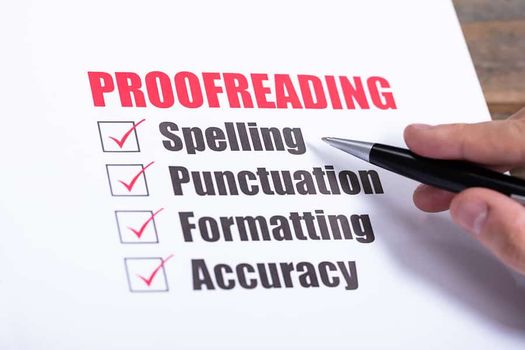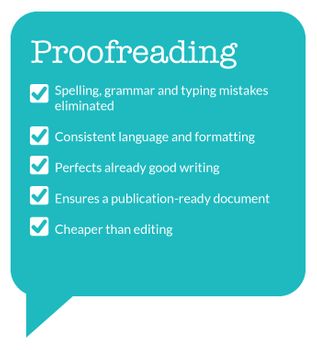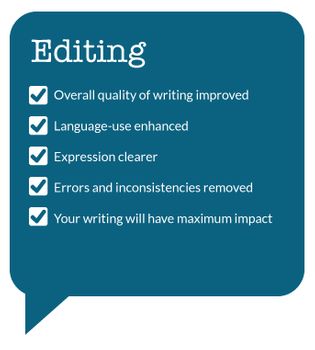Be it a student or a professional writer, proofreading is the final and crucial process to get any writing game right. You must have always been told by your teacher to proofread your work before submitting it. The questions like what is proofreading? Why it is so important? Are still unanswered in your minds.
I am here to uncover all the details about what is proofreading. I will also inform you what to expect if you use proofreading services. Irrespective of any writing format, it’s essential to go over the content again to make sure it’s written clearly and accurately.
You might know that proofreading and editing are two distinct processes. Proofreading does not involve fact-checking. While that information is helpful, the question- what is proofreading still has no exact answer!
Suggested read
- Learn 8 main aspects of scriptwriting
- What is TRANSITION WORDS ?- Master the art of writing
- WHAT IS SEO ARTICLE WRITING ? FEW TIPS
- WHAT IS TECHNICAL WRITING ?
Table of Contents
What is proofreading?
Proofreading is the final quality check, with the goal of finding and correcting mistakes such as typography and misspellings. This process ensures accuracy and consistency in grammar, spelling, and punctuation.
This step is essential for any content that will be shared with an audience. Whether it’s an academic paper, a job application, an online article, or a news report- they all need to be proofread. You can proofread the text yourself or use proofreading services, depending on your talents and budget.

Proofreading definition
According to Cambridge Dictionary, proofreading definition is the process of finding and rectifying mistakes in the draft before it’s published.
The term originated in the publishing sector. Publishers used to print a “proof” copy of a text before digital publishing became common. A proofreader was responsible for spotting any grammatical, typographical, or formatting flaws or inconsistencies during the final examination of the proof.
Even if your content has gone through all the stages of editing, some errors can get missed. This is where proofreading comes in. To proofread is your last opportunity to correct any mistakes that have been slipped.
Wait, did you think proofreading and editing are the same?
Well, you are highly mistaken. As the meaning is explained in the paragraphs above it’s clear that both are different. While editing might involve significant modifications to content, structure, and language, proofreading focuses solely on tiny inconsistencies and errors.
If you take it this way, editing is a big ground and proofreading is just a small pillar inside. You have a knowledge of what is proofreading and the difference between a text that is edited and the text that is proofread. But is it necessary for you to go through both the steps? Yes, it is!
Textbroker has defined proofreading as analyzing text content to eliminate errors


Proofreading, copyediting, and substantive editing are three separate styles of editing that focus on different areas of writing. Every writer desires error-free content. You must ensure that your writing is gaffe in order to effectively communicate your point. Therefore to revise, edit, and proofread, all three are required.
What does proofreading include?
What is proofreading? A final quality check of your content. To get a more clear grip on the topic, know what all are included in the process.
A document should have been edited by the time it is ready to be proofread. This implies that the content is already well-written and simple to comprehend. While editing also involves correcting errors, it is mainly concerned with ensuring that the document as a whole makes sense.
Proofreading, on the other hand, is the process of identifying little and significant errors that were either overlooked or made during the editing process. Proofreaders ensure that the final draft of the text is free of grammatical, formatting, and typographical errors (e.g., subject-verb agreement issues, inappropriate word selections, poor punctuation, and erroneous spelling). They also ensure that the document follows the specified style guide.
The goal of substantive editing and copy-editing is to improve the substance and subjective quality of your work, whereas well proofread content ensures that the material is technically correct.
Significance of proofreading
Errors do have an impact on how you perceive written content. Even if your brain automatically corrects it for clarity, you’re left wondering about the overall quality. Furthermore, as a reader, you become distracted, concentrating solely on the errors rather than the content of the article.
The same can happen with your readers. Your intended message may fail to reach them because they might lose focus. Proper editing and revision of your content quite a few times result in an error-free piece.
This important process also guarantees that your work is professional. It demonstrates that you spent time and effort perfecting your document. The subliminal experience of reading will reveal it.
When confronted with a plainly unproofed book, the audiences are likely to conclude that the author couldn’t be bothered to put effort into their work. Therefore why should they invest if the author didn’t seem to care?
The good news is that, with a little effort, these mistakes are easily avoidable.
Proofreading symbols and marks you must know
Despite the excessive use of software for writing and correcting, traditional proofreading symbols are still prevalent.
What are proofreading symbols?
Proofreading symbols are used by proofreaders when they edit a hard copy of a text. Marks are a collection of coded instructions that indicate where mistakes have been made and how to correct a piece of writing.
These symbols are designed to point out grammar and punctuation flaws, as well as issues with layout, formatting, and terminology.
I’ve included a list of some frequent proofreading symbols and marks below. There are, however, many more than the ones named. You may always look for more over the internet.
Proofreading marks come in two variations: abbreviations and symbols. Let’s have a look at both by wordy
Abbreviations
- sp
Stands for spelling
Used to indicate misspellings
- stet
Stands for let it stand
Used to indicate that proofreading marks should be ignored and the copy unchanged.
- ls
Stands for letter space
Used to indicate adjustments in letterspacing
- ital
Stands for italics
Put in Italics
- bf
Stands for boldface
Put in boldface
- lc
Stands for lower case
Put text in lower case
- caps
Capitalize
Put text in capita case
- sc
Stands for small caps
Put text in small caps
- wf
Stands for the wrong font
Put text in the correct font
- wc/ww
Stands for word choice/wrong word
Indicates an incorrect or weird word choice
Symbols
Insert
Delete
Close up
Delete and close up
Space
Transpose
New paragraph
Comma
Period
Hyphen
Move left
Move right
Move up
Move down
Make uppercase
Make lowercase
Insert colon
Insert en dash
Insert em dash
or
Insert quotation marks
Choose proofreading services
A little unsure whether your content is perfect or not? Don’t want to witness the reader’s disappointment? Choosing professional proofreading services would be a good option.
While choosing proofreading services you have two options. You can either hire a professional proofreader or send your content/ document to a company.
However, there are a few pointers you should keep in mind while choosing services. Let’s have a look at them!
- Check whether you need both or only one
It’s vital to understand how much labor your content will entail. People frequently believe that they simply require proofreading when, in fact, the material would benefit from some editing as well.
If you send a proofreader a document with grammatical errors, ambiguous sentences, and difficult-to-follow paragraphs, they may decline the task or suggest that you use a different provider.
Many freelancers and companies provide both editing and proofreading services, either independently (at different prices) or as part of a package. Make sure you’re clear on the adjustments that have been made. Will the editor merely address minor mistakes, or will they also make suggestions for odd phrasings and structural issues?
- Is it important that your proofreader is an expert in your writing genre?
Well, not necessarily. A wide range of works needs to be proofread, from literary novels to technical reports, Ph.D. dissertations to promotional flyers. A provider that specializes in your sort of paper is usually the best option.
While proofreaders and copy editors aren’t required to have expert knowledge of the text’s subject, it will make the process go more efficiently if your proofreader is familiar with the genre’s standards and conventions.
- How long will the process take?
Although you should aim to provide plenty of time for editing and proofreading, if you have a tight deadline, it’s essential to select a service that can meet it.
Most organizations give a variety of deadline options, but it’s preferable to allow at least 24 hours for the work to be done. If you can wait longer for your document to be returned, the price will usually be lower.
It’s conceivable that you won’t be able to do the job in 24 hours if the document is quite long, especially if you need modification. A skilled editor should be able to complete 10,000–15,000 words in a single day for combined proofreading and copy editing.
- Most important aspect: pricing
The price of proofreading varies significantly. The cost is determined in part by the location and experience of the proofreader, as well as the kind and length of the text and the turnaround time. Typically, rates are calculated per word or per hour. It’s possible that the service will be paid per page if it also focuses on formatting.
Depending on the time and preference you choose, the rates might vary!
- How to know whether your choice is perfect?
Check reviews of the companies or freelance proofreaders you’ve shortlisted. Make sure you check their online ratings on independent review sites. Test their customer service. Check the company’s policies about the refund and other factors before you hand it over.
The quality of proofreading services, like everything else on the internet, varies greatly. Before you choose one, do your research. A lot can depend on the choice you make.
Besides, going for proofreading services you can do it on your own as well. Self-proofing is a skill all writers should practice. Scroll through the internet for online tools and software. No doubt, you will end up getting confused. Follow the same procedure, do a little bit of homework before you choose an online tool to proofread your writing.
You can use professional services like: www.grammarly.com, www.paperrater.com, www.wordy.com/, etc. Proofreading online can be done easily with these free or paid tools. Try them out! Additionally, you can find proofing tools in ms-word as well.
Proofreading jobs
Willing to become a proofreader after knowing what is proofreading. If you think you have those abilities that can make you a good proofreader, then you must start hunting for proofreading jobs.
However, interest alone doesn’t help. You need appropriate skills and talent to land good proofreading jobs. Before looking for proofreading jobs, understand the roles and responsibilities of a proofreader.
What does a proofreader do?
By the time it reaches a proofreader, the content has already gone through changes. Hypothetically, you as a proofreader will only have to do a final “proof” to ensure that there are grammatical errors and is visually perfect.
A proofreader searches for language problems such as erroneous subject-verb agreement, tenses inconsistency, and sentence parallelisms. They also guarantee that punctuation rules are followed (e.g., the use of hyphens and dashes, Oxford comma rules, and so on) and that proper spellings are used in accordance with language requirements.
They also ensure that proper style requirements are followed when it comes to academic writing. A proofreader, not an editor, will ensure that the reference list, in-text citations, footnotes, annotations, and other elements of the style are followed, as well as the general format of the style.
Clear with the roles and responsibilities of a proofreader? If you are confident that you are perfect for this role you are free to hunt for proofreading jobs online.
Following are a few guidelines to keep in mind as you go through the procedure
Anyone who writes should have a basic understanding of proofreading. There are certain ways you may use to proofread efficiently and effectively before sharing your work, such as company reports, blogs, or college papers.
- Take a break- It’s much tougher to spot problems when you’ve been reading and reviewing the same words for hours or days. Set your work away for a time before proofreading so you can see it with fresh eyes.Too much attention to something disrupts the quality. If you have time, wait at least a day or two before final proofreading, but if you’re on a tight schedule, even a half-hour break will help. Indulge in some other activities, and start afresh.
- Edit your writing- Make sure you’ve thoroughly updated and edited your work before moving on to the last round of proofreading. It’s pointless to spend time correcting tiny errors if you’re going to eliminate entire sections or alter paragraphs later. Only proofread once you’ve finished the final draft and are satisfied with it.
- Read it out loud- This strategy helps you spot mistakes easily. Reading your content loud also makes you understand how it will sound to the readers. It also aids in the detection of awkward or abrupt sentences.
- Take a printout – Taking your gaze away from the computer screen and onto a real page can aid in the discovery of errors that may have slipped through the cracks.
- Use digital tools- While reading from a printed document might assist you in spotting problems, word processing software can assist you in quickly correcting them. Run a spell check first, but don’t expect the machine to notice every mistake.
- Be a spotting learner- Don’t get upset if there are too many errors in your content. Learn from your mistakes. Pay close attention to the errors that recur throughout the text. This will assist you in avoiding them in the future.
The most difficult aspect of proofreading is recognizing what to look for. You’ll definitely detect glaring typos, but subtle grammar and punctuation errors can be difficult to see. The table below lists some of the most common mistakes to avoid.
Conclusion
Although a proofread is less thorough than an edit, it is a pivotal time in preparing a piece of writing for others to read. Errors can cause confusion or be perceived as unprofessional.
As promised, at the end of the blog, I am confident you exactly know what proofreading comprises. Between proofreading and editing, there is no room for ambiguity. Begin editing once you’ve completed your writing. Unproofed content can result in significant consequences. And I’m sure you don’t want to deal with them.
As a result, consider proofreading online or use one of the many proofreading services available. Furthermore, if you believe you have the ability to become a skilled proofreader, there are many proofreading jobs available on the Internet. You’ve got a lot on your plate!
With error-free material, you can pique your readers’ interest and get your message over quickly.





 WhatsApp
WhatsApp